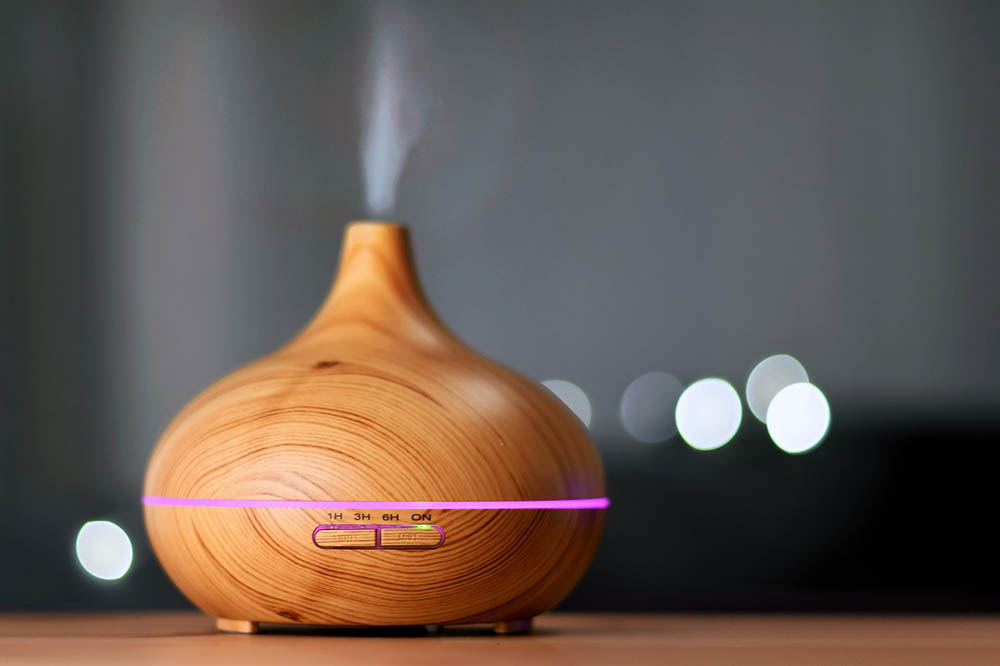Dry Air In The House: Causes, Symptoms & Solutions
-

- Last updated:

Dry air essentially means less moisture in the air, and although this can occur at any time of the year, and may be caused by factors within the house, it is most often associated with wintry conditions. Cold air cannot retain moisture as well as warm air, and the resulting dry conditions lead to physical symptoms like chapped lips, while making us more susceptible to viruses and allergens.
There are symptoms you can look for in the home, as well as steps that you can take to help increase humidity levels in the air and eradicate any of the problems that dry air potentially causes. Read on for more information.

Causes of Dry Air
In most of North America, dry air typically occurs during the cold winter months. Cold air is not as efficient at retaining moisture as warm air, which is why we get such humid environments during the summer months and, conversely, why we suffer dry air in the winter.
So, while there may be some internal conditions that can cause dry air, the single most common cause is cold outdoor conditions, and if you ventilate your home, which we are advised to do, this means that the conditioned air created by your heating system is being replaced by more dry air from outside.

What Are the Symptoms of Dry Air In Your House?
There are several tell-tale symptoms associated with having dry air, or too much dry air, in your home:
1. Static Shocks
Static electricity can pass more easily through dry air than damp air, which means that if your home has a build-up of dry air, you are more likely to experience static shocks when you touch items and people around the house. If you find that you or your family are complaining about being zapped more often, it could be a sign of dry air.
2. Cracked Paint
A normal level of moisture is required to keep paintwork healthy, which means that if your home is too dry, it will lead to the paint drying out. When it dries out, it starts to crack and peel. It might not just be time to repaint but also to find ways of introducing moisture into the air.

3. Increased Likelihood of Nosebleeds
Dry air can dry out the membrane in your nasal cavities, causing a crust that can itch and bleed when irritated. Therefore, you may experience more nosebleeds because of a dry atmosphere.
4. Chapped Lips
Dry air attempts to take moisture from anything around it and this includes your lips and skin. This is why conditions like eczema and psoriasis can get worse and it is also why you get chapped lips in a dry home.
5. Breathing Difficulties
Dry air causes the airways and lungs to contract, which means that there is less room for air to pass through, causing restricted breathing. While the problem may be more exaggerated in those with existing respiratory problems, it can also cause breathing difficulties in otherwise healthy people.


What To Do About It
The air itself can do a good job of taking moisture from anywhere in your home. If it cannot find a good source, it will take it from paint and even from your lips, but by trying the following, you may be able to increase air humidity without suffering the symptoms of dry air. We are told to avoid doing many of these things to prevent rooms from becoming too humid, but our aim is to increase humidity.
1. Leave Water Out
The simplest way of introducing water to a room is to leave out buckets or other containers that are filled with water. You will need to do this in each room that you suspect has dry air and you should keep an eye on the water level.
2. Boil Water On The Stove
Boiling water on the stovetop release moisture in the air quickly and efficiently because the steam travels around the kitchen and causes condensation in connected rooms, too. Obviously, you shouldn’t leave water boiling for extended periods of time.

3. Leave the Shower Room Door Open
When you have a shower, open the shower curtains and the bathroom door. There is even more steam created when having a shower than when boiling water on the stovetop so this method can introduce a lot of moist air into the atmosphere, and it will get to several rooms.
4. Let Damp Cloths and Sponges Dry Out In Rooms
This is similar to leaving a pot of water in room, but it means that you don’t have to worry about knocking the water over. Wet a sponge or cloth and leave it in a dry room. When it dries out, wet it again and put it back.
5. Get A Humidifier
While many of us are familiar with the concept of a dehumidifier, a humidifier does the opposite. It replaces dry air with moisture filled air. It can be placed discreetly in a room and left running to provide a fairly constant flow of damp air.

6. Get House Plants
Not only do you need to buy and place houseplants but ensure that they are properly water and consider buying a plant that benefits from regular misting. Spraying the plant’s leaves won’t only benefit the plant itself but the rest of the room and the air in it, too.
- You might also like:Is Front-Wheel Drive Good In The Snow?
Conclusion
While we generally worry about humid air in the summer, when there is a lot of moisture in the atmosphere, some of us also have to worry about dry air all the time. It can cause dehydration of people and plants, chapped lips, and may also lead to respiratory and allergic conditions. Your rooms may experience cracked paint. Look for ways to introduce moisture into rooms affected by dry air, such as adding house plants and keeping them watered, leaving the door open when you shower, and even placing damp sponges and cloths in affected rooms. Alternatively, a humidifier can do the same job while being easy to place and requiring no installation.
See also:
Featured Image Credit: Pexels, Pixabay
Contents

